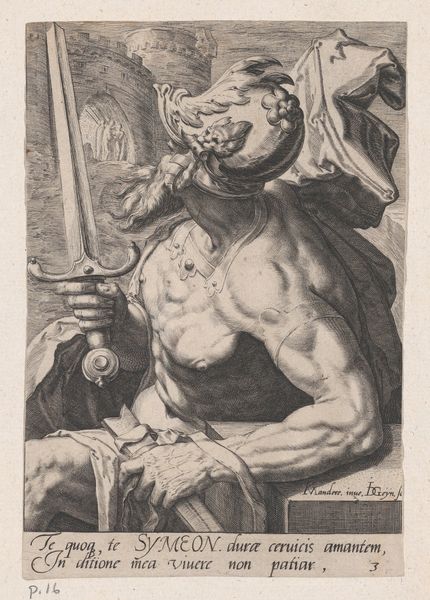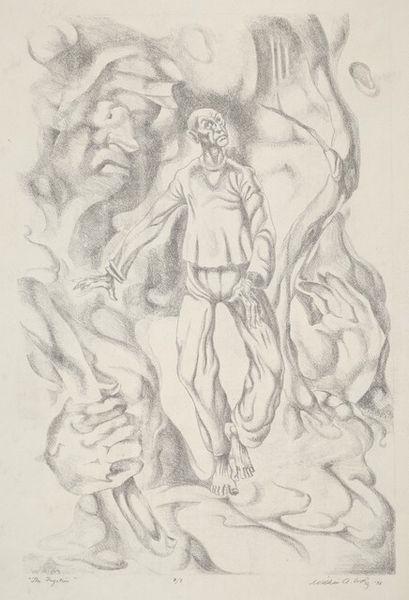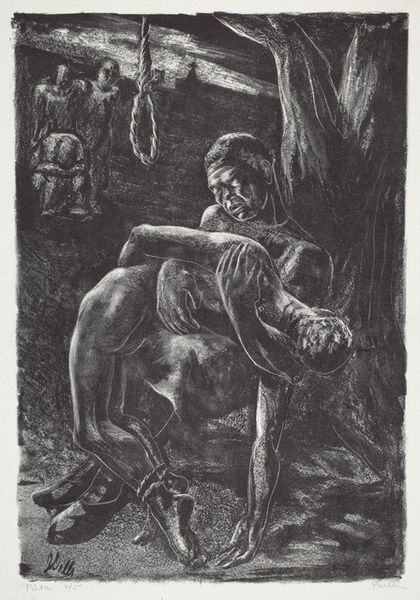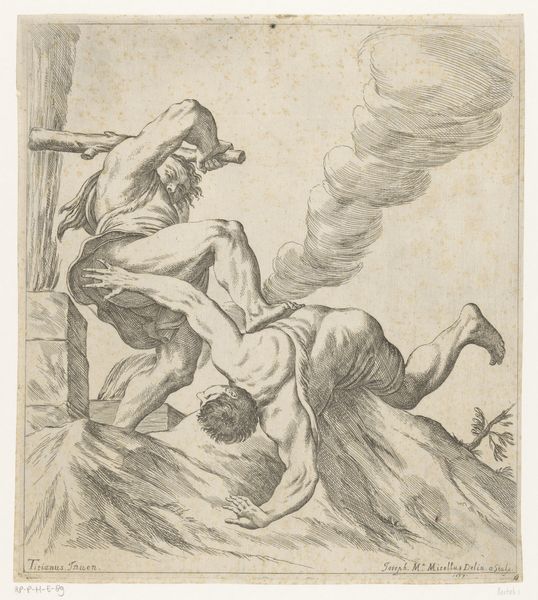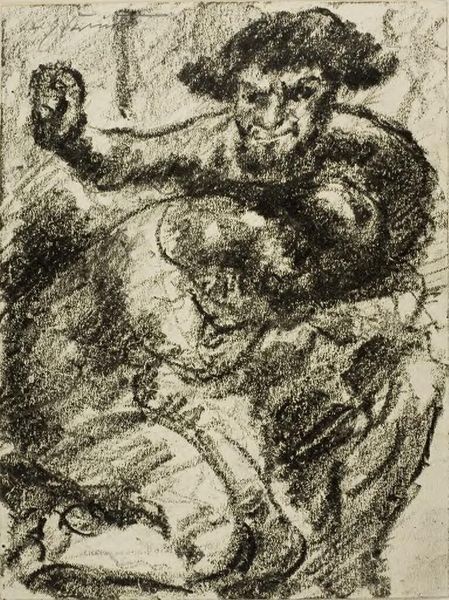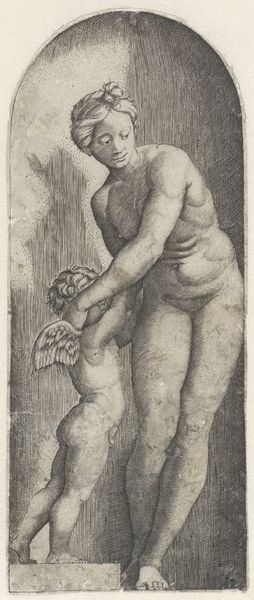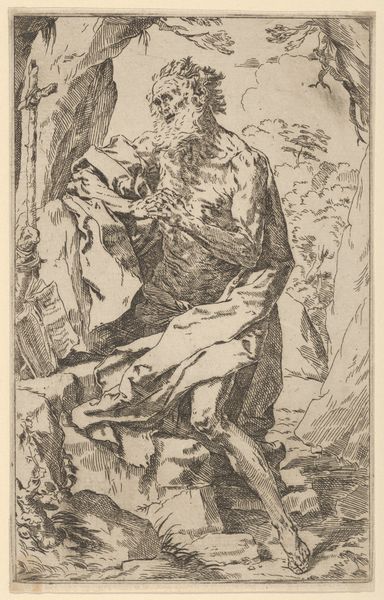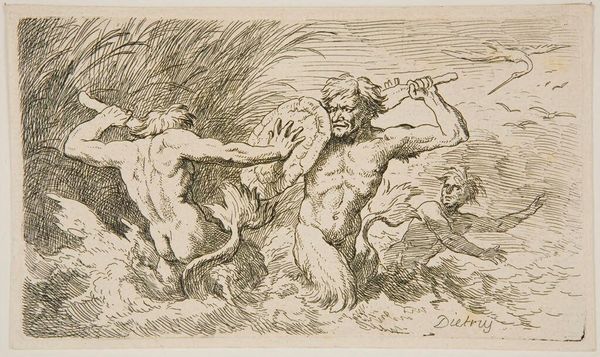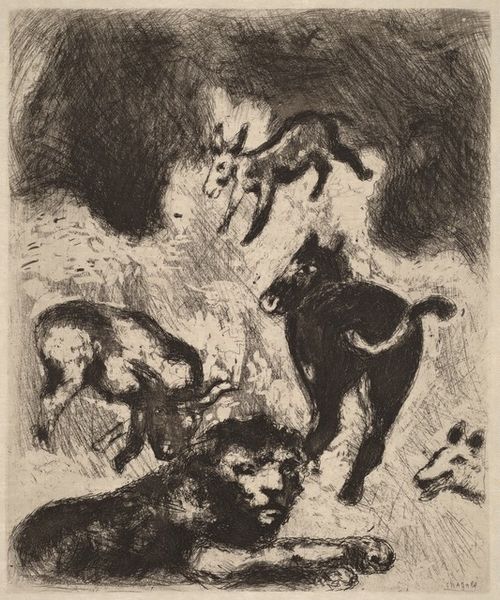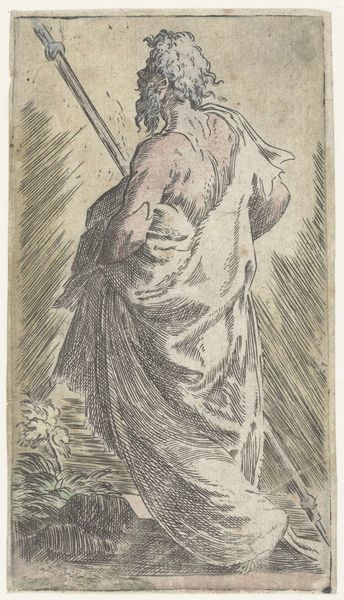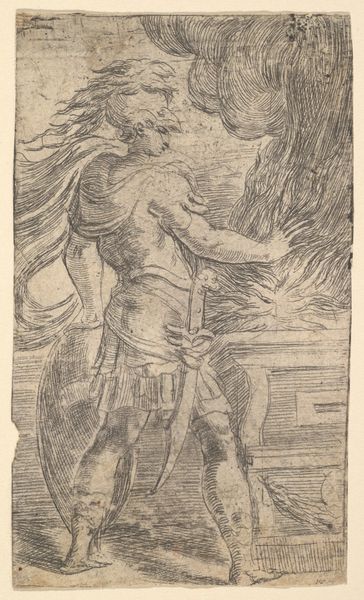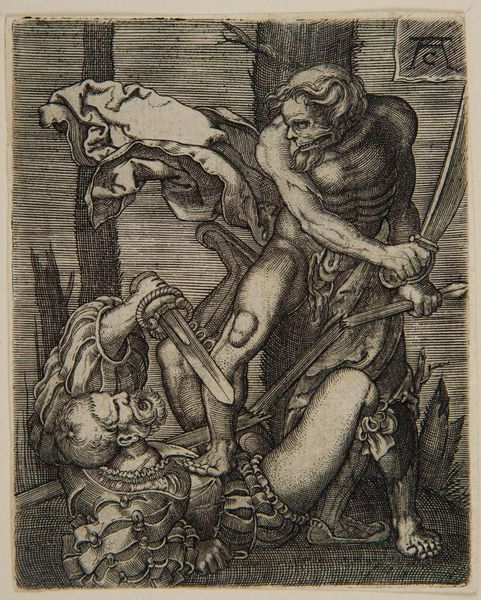
drawing, pencil
#
drawing
#
figuration
#
social-realism
#
pencil drawing
#
pencil
#
mexican-muralism
#
realism
Dimensions: image: 407 x 265 mm sheet: 455 x 312 mm
Copyright: National Gallery of Art: CC0 1.0
Curator: Stanton Macdonald-Wright’s drawing, “Laborers,” from 1936, is an interesting example of social realism using a fairly simple medium: pencil. Editor: It definitely feels charged, doesn't it? Raw emotion jumps out. The exaggerated muscles, the shouting mouth… I can almost feel the struggle and anger radiating from the page. Curator: Exactly! And that ties so strongly to the period. Macdonald-Wright was engaging with the rise of labor movements and Mexican Muralism, influenced by the politics around him. The figures aren’t just laborers, they embody collective resistance against oppressive systems. Editor: Looking at the marks, it appears like the artist applied a lot of pressure to achieve the gradations of shadow and volume on these working bodies. What did the means of production contribute to the political undertones? Curator: That pressure embodies the strain of manual work, perhaps, and highlights that direct connection between labor and representation, reflecting his synchromist past even as he veered toward social realism. Macdonald-Wright also seemed deeply concerned with exploring marginalized experiences in California, moving towards figuration as a sign of commitment to the cause of everyday citizens. Editor: Absolutely. The material—pencil on paper—contrasts powerfully with, say, a bronze sculpture depicting industry. The humble nature of the tools here amplify the subjects' down-to-earth existence, placing value on this very specific human toil in society. Even the seemingly unfinished quality speaks to process over perfection. Curator: I think you’re onto something important by recognizing that Macdonald-Wright wanted to draw attention to this shared identity amongst laborers, focusing on class consciousness and activism by spotlighting their voices, struggles, and hopes. Editor: It is as if by using basic means, a simple drawing technique and readily available paper and pencil the artist creates an act of bearing witness, transforming the raw depiction into an enduring symbol for the worker. Curator: It has been interesting examining “Laborers” again through these lenses. Considering the artist’s commitment to making sure those voices were heard and the social messages were clear makes this small drawing rather momentous. Editor: Indeed. Looking closely at the work allows us to reconsider its historical narrative while considering the material conditions of its making.
Comments
No comments
Be the first to comment and join the conversation on the ultimate creative platform.
